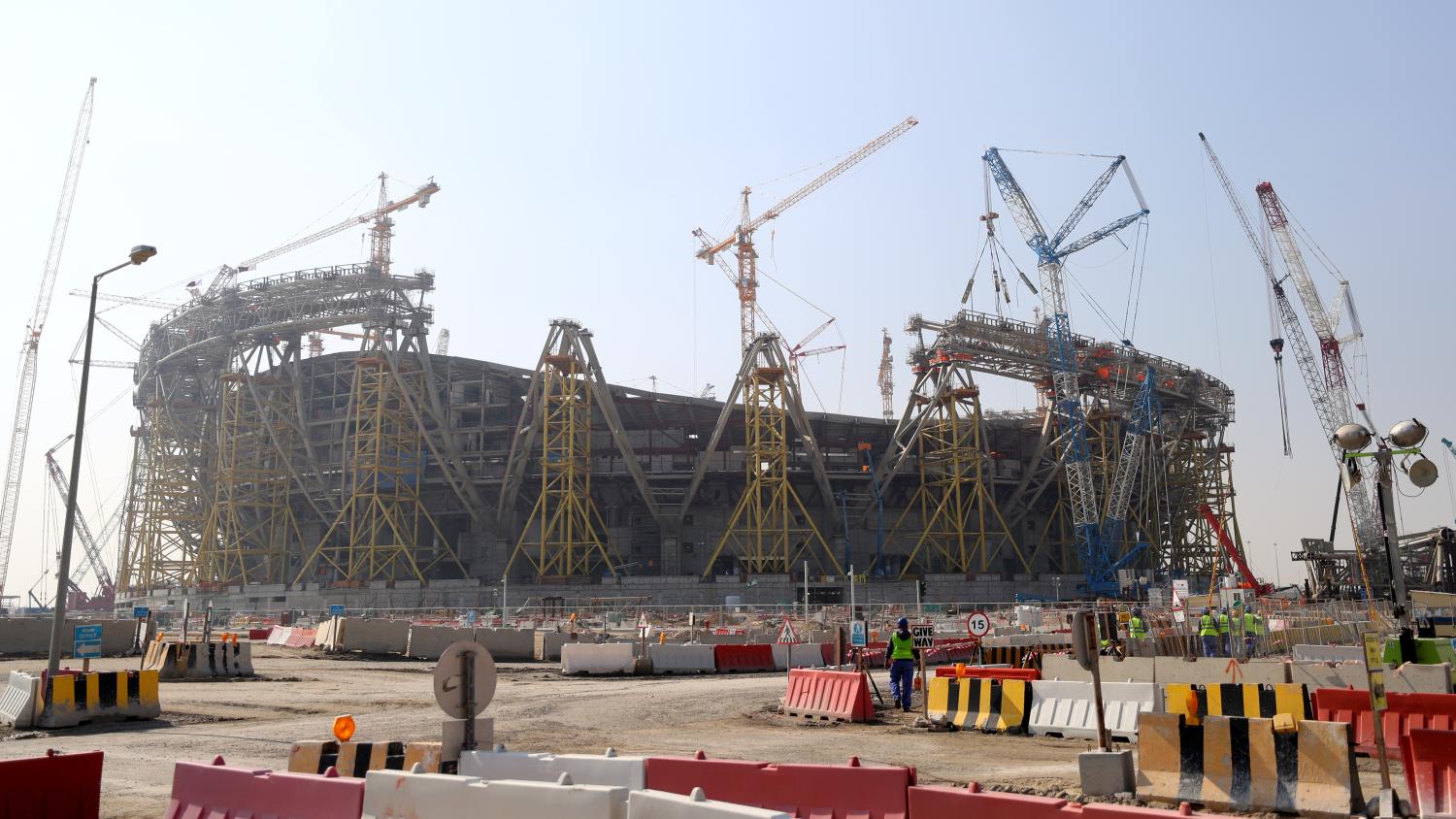World Cup 2022 is scheduled to begin Nov. 21 in Qatar, less than 18 months from now, but it will not be without controversy.
Qatar is on schedule with its stadium construction, but the country also currently has the highest number of confirmed positive COVID-19 tests per capita of any country in the world. Much of this spread has been attributed to the densely populated labor camps that house 600,000 migrant workers, many of whom were commissioned to build the state-of-the-art stadiums to be used for the World Cup.
This is not the only time Qatar has received international scrutiny for working conditions around World Cup stadiums. At least 34 workers have died while building these stadiums, and there have been recent reports that some workers have gone seven months without pay.
Despite these concerns, Qatar has assured that the World Cup will continue as planned.
In a recent interview with Sky News, Qatar's foreign minister Sheikh Mohammed bin Abdulrahman Al Thani asserted: "We believe that Qatar is working very closely and strongly with different healthcare organizations to make sure to deliver a healthy and safe World Cup and believe that this is part of the cure for the world to be back together in a happy manner."
In May, the country of almost three million inhabitants blocked off over 30 hotels to use for quarantined patients and made it mandatory to wear a mask in public, imposed by the threat of a possible $53,000 fine. It has also implemented a strict testing and tracing system. Despite the high COVID-19 infection rate, the death rate in Qatar has been surprisingly low due to the country's well-funded health care system and aggressive response.
While Qatar's endless wealth and resources seem to be calming coronavirus concerns in the Persian Gulf, the virus is still causing devestation elsewhere. Brazil and other Central and South American countries are experiencing the strongest surge of cases. Undeterred by this turbulence, last week the mayor of Rio de Janeiro apporoved the resumption of soccer in his state.
World Cup qualifying has already begun in Asia and Africa, but North and South American qualifying tournaments are set to begin this fall. It is still questionable whether autumn and winter American domestic sports leagues will start on time; add in the safety concerns of international travel and qualifying games in these continents seem more doubtful.
International friendlies spread throughout the year could likely be replaced with competitive matches, South American qualiying has already been pushed from March to September 2020. South America faces an added challenge as the 10 teams must face each other home and away, creating a grueling total of 18 games (versus just eight or 10 for Europe). No international matches in the fall would delay another six matches for the continent.
UEFA qualifying does not begin until March 2021. It is likely UEFA will add another competitive match to each international break, making it three matches in 10 days. Elongated travel distances in South America make this solution improbable but extended international breaks could alleviate the situation.
The issue of player fitness also arises, as teams will be forced to play more matches in a shorter timeframe. Having multiple international tournaments in 2021 doesn't help either.
CONMEBOL, South America's soccer governing body, also has to contend with the Copa America, which was pushed back from this summer to June 2021. There are talks that this competition could be canceled to make room for World Cup qualifying fixtures. But the Copa America is a major source of income for CONMEBOL, and the countries are already losing money this year from the lack of international matches and the postponement of the Copa Libertadores.
Shortening the qualification process has also been suggested, but again a lack of income could be the deciding factor. Yet if matches are played without fans, this point could become mute (something that has not been explicitly suggested but is always an underlying solution).
In North America, Concacaf is considering adjusting its format, in which the top six teams in the FIFA rankings play a round robin with the top three advancing, and a playoff to send another team to the intercontinental playoff.
"Nobody knows what we have ahead of us," USSF technical director Earnie Stewart said. "We’ve already missed out on the March dates. We’ve missed out on the June dates. It kind of looks like the September dates at (this) moment might not be there either. The possibility of qualifying and losing FIFA dates comes closer and closer. FIFA is talking about adding dates as well. … Nobody knows the dates as of today and how many FIFA dates there will be going forward."
Regardless of what happens in the next year and a half, it is clear that world soccer organizations and political leaders are making persistent efforts to ensure that the 2022 World Cup takes place on schedule, even if that means cutbacks elsewhere in soccer.






